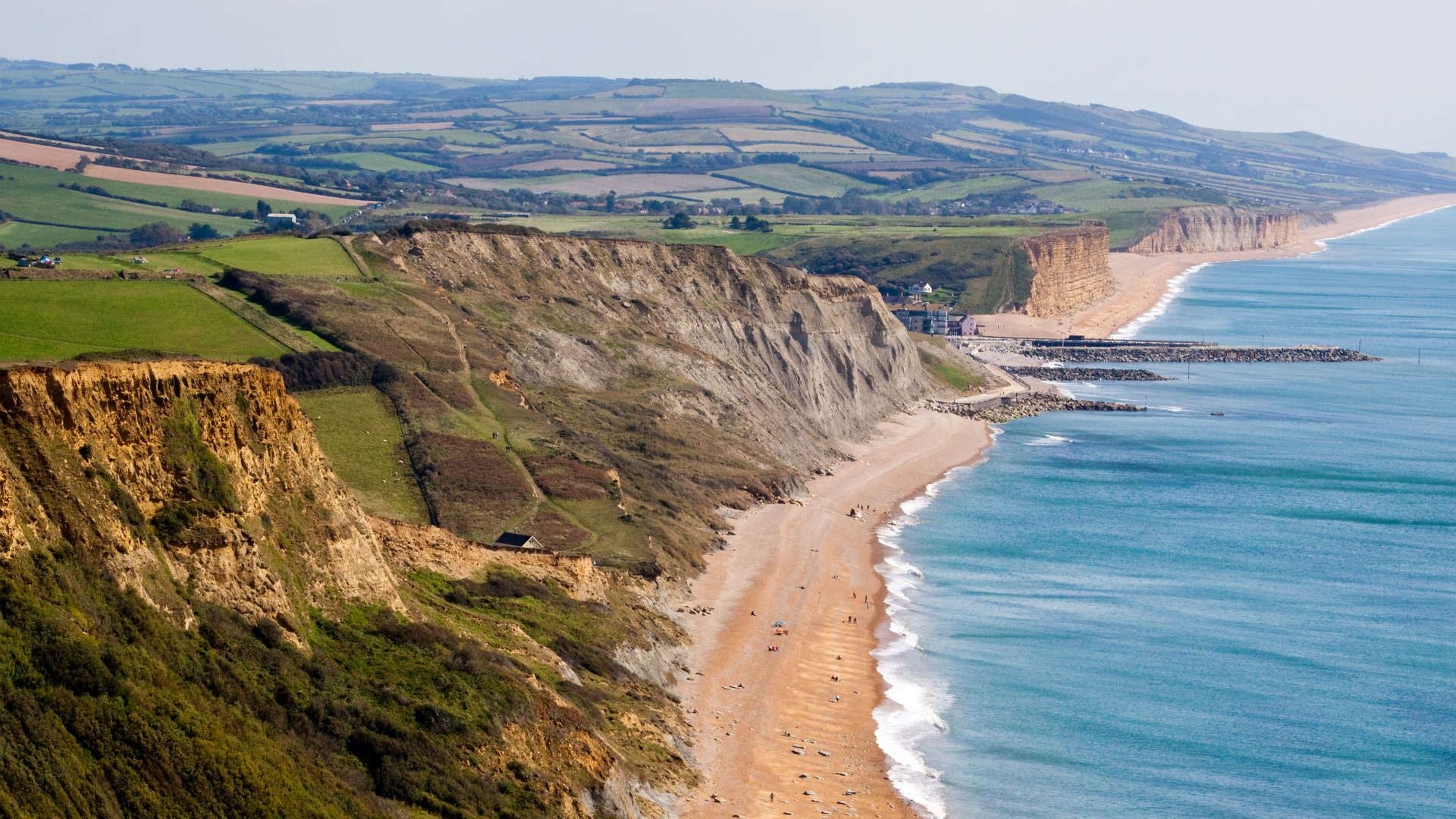
History of Dorset
When we begin to unlock the secrets in sediment, Dorset reveals a story far removed from the landscape we know today - a time when it was unrecognisable and not the green hills and rolling pastures we see today, but a scorched desert on the edge of the vast supercontinent named Pangaea.
During the Triassic period, around 250 million years ago, Dorset lay near the equator. It was a land of red sands and flash floods - a baking wasteland of towering dunes and sudden rivers, laying down the earliest rock layers still visible today.
By the Jurassic period, Dorset had drifted into the warm shallows of a tropical sea. Coral reefs, ammonites and ichthyosaurs swimming where cows now graze, and where I search for artefacts of our own relatively recent past. This is the golden age of the Jurassic Coast - from the Blue Lias of Lyme Regis to the fossil-rich Lower Kimmeridge Clay of Weymouth, this was a time of life, death, and secrets being locked in sediment. The sea here teemed with ancient creatures, slowly buried and preserved in layers of soft clays and limestone.
In the Cretaceous, the land lifted and sea levels changed. Chalk formed - the same chalk that now shapes the white cliffs and downland ridges from Lulworth to the Purbecks. Dinosaurs still stalked the land, but the end of their reign came with a bang (or a cosmic thump), and Dorset entered a new, quieter age.
Fast-forward through deep time - erosion carved the valleys, rivers shaped the ridges, and the Ice Ages sculpted the Dorset we see today, although glaciers never quite reached this far south. As the climate warmed and the sea rose, humans arrived.
The first people to leave their mark were Mesolithic hunter-gatherers, roaming the wildwood with flint tools and sharp eyes. By the Neolithic, they were building burial mounds and clearing forest for farming. You can see long barrows and ancient trackways hidden in the hills all around Dorset.
By the Bronze Age, Dorset was thriving. Hillforts like Maiden Castle and Eggardon Hill rose above the valleys - places of power, defence, and maybe even ceremony. As the Iron Age dawned, the Durotriges ruled this land - fierce, tribal people with their own coinage, pottery, and sense of place. Their territory was tight-knit, clustered with roundhouses and field systems, and it’s their forts that still dominate the skyline.
Then came the Romans, bringing roads, villas, baths, and bureaucracy. They didn’t find Dorset easy to tame - the Durotriges fought them tooth and nail - but eventually, the land was absorbed into Britannia. The Romans built Dorchester (Durnovaria), and you can still trace their walls and mosaics beneath today’s streets.
After Rome fell, Dorset didn’t stay quiet. Saxon settlers arrived, renaming rivers and ridges, shaping the land anew. They gave us names like Frome, Bere, and Gillingham. Dorset became a borderland, caught between Wessex and invading Danes, before eventually becoming part of the rising Kingdom of England.
By the Medieval period, Dorset was a patchwork of manors, churches, and feudal farms. Castles rose - Corfe Castle the most iconic of all - and Dorset’s markets, ports, and abbeys began to flourish. Life was still hard, but the shape of today’s landscape was firmly in place.
From desert dunes to dinosaur seas, tribal strongholds to Saxon shires, Dorset’s story is etched into every cliff, barrow, and lane. You’re never far from deep time here - it’s just beneath your feet.
As you can see below, Dorset has some of the richest layers of history in the UK - from prehistoric fossils to Roman coins and medieval artefacts, every inch of its landscape tells a story
-

Beauty isn't all about appearances
Amoeboceras bauhini is an extremely rare ammonite. This specimen featured in the book 'A FIELD GUIDE TO THE FOSSILS OF THE FLEET LAGOON'
-

Antoninianus of Gallienus (c. 253–268 AD)
More coinsThis Roman coin, found in Dorset, features Emperor Gallienus and a reverse honouring Mars, the god of war. Struck during one of the empire’s most chaotic periods, coins like this reminded people of Rome’s strength - even as its borders crumbled. These would’ve circulated widely, reaching Britain’s towns, villas, and fort sites.
-

Pliosaur Tooth
This fossil played a pivotal role for me. One of the rare pieces I sold while broke, investing everything in equipment and absolutely helping me toward what I do now.


